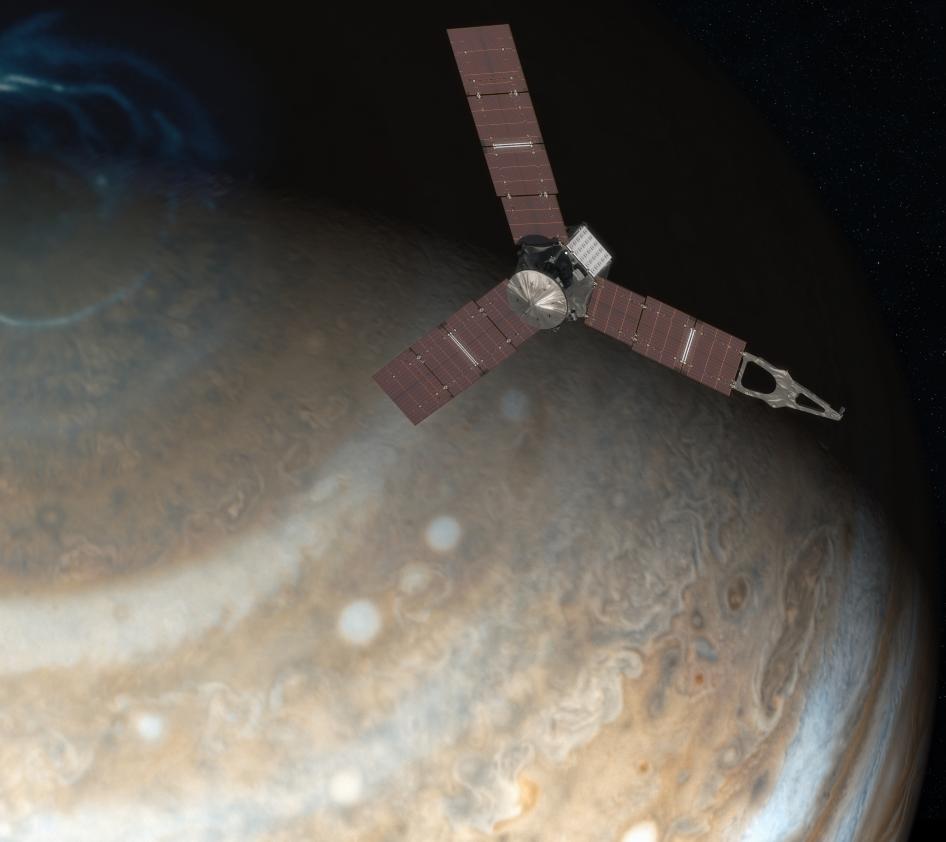Science News
Juno to Jupiter
December 11, 2013
by Molly Michelson

Juno, launched in August 2011, won’t reach Jupiter until July 4, 2016. But in the meantime, it’s gathering fans here on Earth.
When it reaches Jupiter, Juno will begin orbiting the gas giant, observing its atmosphere and gathering data to determine how the planet formed (it likely was the first planet in our Solar System) and how that influenced the formation of other planets in our Solar System. Its observations may also shed light on exoplanet formation.
But to get there, Juno needed a little help. From Earth. So October 9th of this year, Juno came within 347 miles (559 kilometers) of Earth to get a boost—gravity assist is the technical term—in its journey to Jupiter, hundreds of millions of miles away. According to the mission’s Project Manager Rick Nybakken just before the flyby, “The Earth flyby will give Juno a kick in the pants, boosting its velocity by 16,330 mph (about 7.3 kilometers per second).”
At the American Geophysical Union (AGU) Meeting this week in San Francisco, Juno team member Bill Kurth also said that the flyby gave mission scientists an opportunity to test their instruments. As it passed nearby, Juno measured Earth’s magnetic field and made other measurements to ensure its instruments were working. Juno’s findings were indeed confirmed by data from other Earth-orbiting satellites.
The flyby also gave Juno the opportunity to build a little goodwill. The Juno team reached out to ham radio operators to greet Juno as it flew by. As the spacecraft approached, over 1,400 operators around the world used their ham radios to say “Hi” to Juno in Morse code. All at the same time! A nice video of this process and the results can be found here.
The spacecraft has four low-resolution cameras, mounted on one of its solar-array arms, that are designed to work in low light. The spacecraft travels quickly (12 km/second) and is constantly rotating. The cameras will find faint stars and determine the spacecraft’s direction and orientation. “Small navigational cameras,” is how Juno’s principal investigator Scott Bolton described them at AGU.
But the team used the cameras for something entirely different during the Earth flyby. They took images of the Earth and Moon moving together, “doing their dance,” Bolton said. NASA put the images together into a movie scored with a beautiful piece of music. Bolton likens the results to Carl Sagan’s Pale Blue Dot. “It’s the philosophical perspective that we’re all from the same fragile piece of the Universe that looks the same as all of the other dots. We’re all on the same Earth team.” It is a lovely video of the Earth rotating while the Moon orbits our planet—click here to view.
It’s even made a fan out of me!
Image: NASA/JPL-Caltech